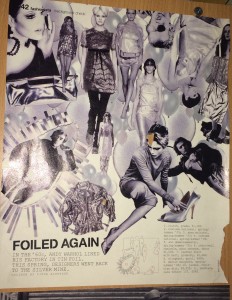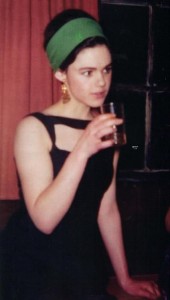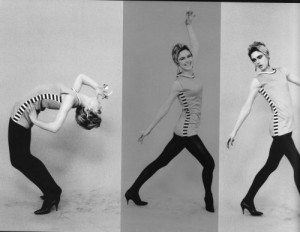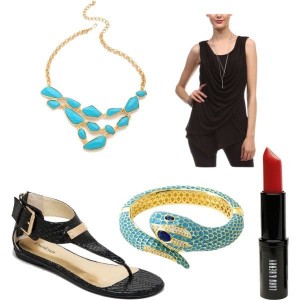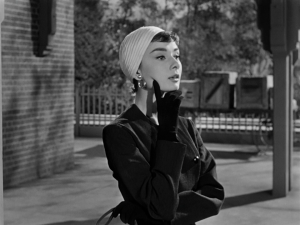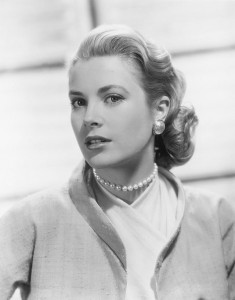You may have noticed in my announcement about a potential paid service that I mentioned nothing about helping people find their Kibbe type. While it’s something I’m asked to do from time to time, and it’s something that I have helped a lot of people with in the color and style community, it’s not something I’d feel comfortable accepting money for. I feel like I’d have to know every type as well as I know Flamboyant Gamine, and I don’t think I can say that about myself just yet. If you want a professional to tell you what you are, I’d send you to David Kibbe himself, Best Dressed, or Guiding Lines.
What I can do, though, is share what I would do, knowing what I know now, if I were new to Kibbe and wanted to figure out my type. I made a lot of missteps along the way, and it took me way longer than it should have. Not everyone agrees with way I see Kibbe, but if what I write makes sense to you and you want to figure out your type for yourself, read on.
1. Read the book.
If all you have access to is what’s been put up on Seasonal Color, I understand. The book can be really, really expensive on Amazon. But if you can get it at a reasonable price, I highly recommend picking it up. It has important chapters–like how to personalize your type–that never made it onto the yuku sites.
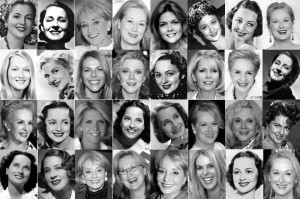
One of Wichyk’s collages.
(Source)
2. Make collages.
Make collages for every type you’re interested in. Good face collages exist already; you can find them on Google Image Search. I warn you, however, that you have to be careful. If there are modern celebrities on the collage, I wouldn’t use it. Also, Natalie Wood was moved from SN to SG and Rita Hayworth was moved from TR to SD. If the author of the collage is “wichyk,” you’re good, except for the Natalie and Rita stuff.
As far as your body goes, I haven’t found many pre-made collages that I really like. I would suggest using Google to find pictures of the book celebrities in their bikinis, or at least an outfit where you can really see their body and be reasonably sure they’re not wearing shape wear. I would avoid modern celebrities because it’s hard to be certain that they are definitely a certain type, and most of them are so toned and muscular that you can’t see their body shape anyway. (The exceptions to this are Kelly Osbourne [FG] and Reese Witherspoon [SG], who I think are OK to use.)
Should you include C, G, and N? Most say Kibbe doesn’t use these anymore, some say he just categorizes people as these types rarely, but it’s your call. You might want to do a collage with, say, DC, SC, and C altogether, to understand bodies and faces with a C base. The recommendations are different from these types than their S and D/F counterparts, though, and some find that they work better. But I think this could turn into a whole separate post, so I’ll stop here and let you make the call for yourself.
At this point, I would be wary of ruling anything out. It’s best to do all the types. I remember when I was first looking at Kibbe, I ruled out FG by the body description alone. Well, that led me astray for many months. If I had made a collage of what FG bodies actually look like, I wouldn’t have been so hasty.
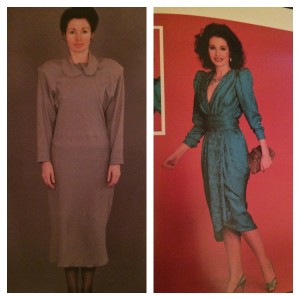
The Theatrical Romantic before and after from the book.
3. Look at yourself.
Once you’ve made your collages, look at yourself in your underwear. Do you have a nice, smooth curve all the way along your torso? What does the area between your waist and your hips look like? How wide are your shoulders? Are your hips curvy or square? Look for these patterns in your collages and try to find your own pattern.
4. Think back.
Once you’ve gotten your options narrowed down, think back. If you’ve ever acted in a play, what were you cast as? If you’ve ever been compared to an actress or a character in a movie, who were they? When you were in high school, what actresses did you really connect with? Maybe you even hung their picture on your wall or copied their style.
In my case, this exercise leads straight to Gamineland. I played a rainbow, who was also a child, in a play with Greek goddesses. I’ve been compared to Jean Seberg in Breathless and Carey Mulligan in Drive. I loved Audrey Hepburn and Edie Sedgwick, and actually wore a lot of mod fashions at the time. It doesn’t always work out that way, though. Sometimes, you hide your light under a bushel. Look at how dowdy and frumpy most of the “before” pictures are of the ladies in the original Kibbe book. So while the answers to these questions can be revealing, I wouldn’t use them as definite, 100% proof that you are a certain type.
5. Clothing time.
First off, avoid Pinterest/Polyvore. Sometimes they are wrong, and often they show a very narrow view of how a type can dress. I would read Kibbe’s clothing recommendations, with the understand that the ubiquity of stretch has made things a little easier since then, and go from there. Go to a store like Nordstrom that will have a wide variety of types. See what happens.
***
These are the steps I would follow if I were to start this Kibbe process all over again. If you try doing it this way, let me know how it works for you.
